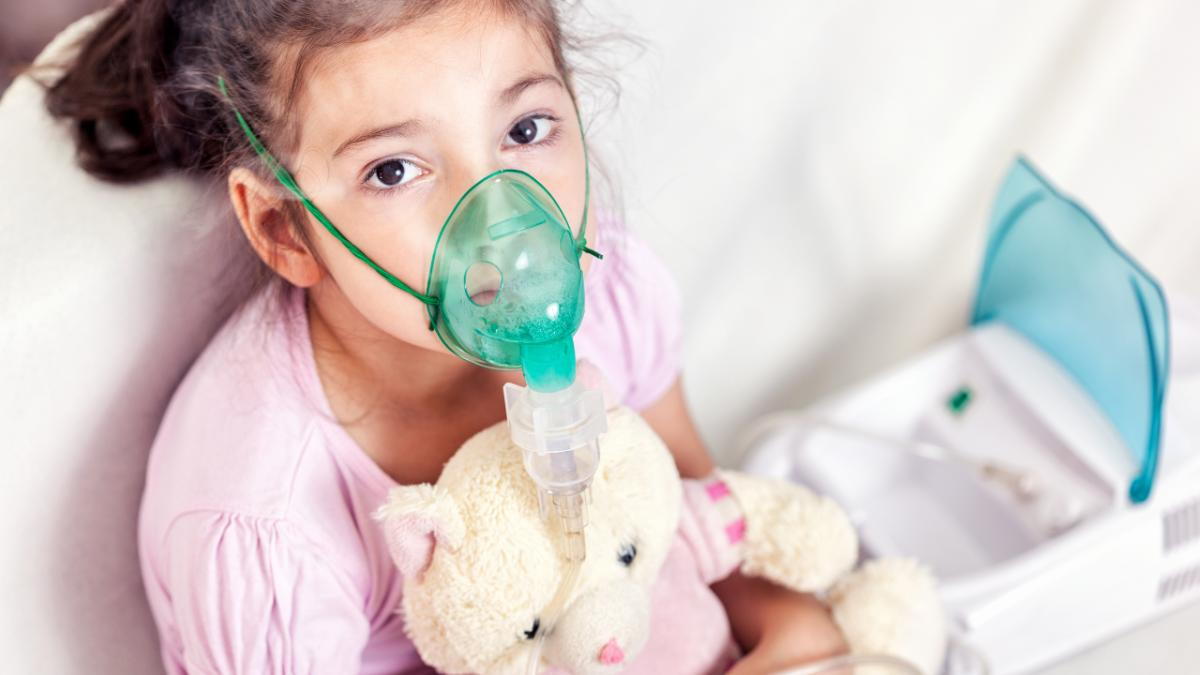
At Kidsville Pediatrics Mansfield TX, we understand the challenges you face when your child is diagnosed with pediatric asthma. It's a condition that can be overwhelming, filled with uncertainties and constant concerns about your child's well-being. But with the right strategies and support, managing asthma doesn't have to be daunting. You can help your child lead a happy, active life without letting pediatric asthma take control.
The first step is arming yourself with knowledge. Understanding pediatric asthma, its triggers, and how it affects your child can empower you to make informed decisions. You'll find that by implementing practical strategies, you can significantly reduce the frequency and severity of asthma attacks. This not only ensures your child's safety but also brings peace of mind to your entire family.
We are here to guide you through every step of this journey. Our pediatricians Mansfield TX professionals are committed to providing you with the latest information and the best practices for managing your pediatric asthma. We believe that with the right approach, you can transform what might seem like a daunting diagnosis into a manageable part of your child's life.
Asthma Symptoms: Recognizing and Responding to Attacks

In childhood asthma, the lungs and airways become easily inflamed when exposed to certain triggers, such as inhaling pollen or catching a cold or respiratory infection. This inflammation can lead to irritating daily symptoms that interfere with play, sports, school, and sleep. Remember, an unmanaged condition can lead to dangerous asthma attacks.
Unique Challenges in Pediatric Asthma
Pediatric asthma is not different from adult asthma but children face certain unique challenges. It's a leading cause of emergency department visits, hospitalizations, and missed school days. Unfortunately, childhood asthma can't be cured, and symptoms can continue into adulthood. However, with the right treatment and guidance from a pediatrician in Mansfield, you and your child can manage asthma symptoms and prevent damage to their growing lungs.
Common Asthma Symptoms
Common symptoms include a whistling or wheezing sound when breathing out, shortness of breath, chest congestion or tightness, and frequent coughing that worsens during viral infections, sleep, exercise, or exposure to cold air. Pediatric asthma can also lead to trouble sleeping due to shortness of breath, coughing or wheezing, bouts of coughing or wheezing that get worse with a cold or the flu, delayed recovery or bronchitis after a respiratory infection, trouble breathing that hampers play or exercise, and fatigue from poor sleep.
Asthma symptoms can vary significantly from child to child and may get worse or better over time. Your child might have only one symptom, such as a lingering cough or chest congestion, making it difficult to determine whether the symptoms are due to asthma. Wheezing and other symptoms can also be signs of other respiratory diseases such as bronchitis. When your child has an asthma attack, the bronchial tubes become swollen and produce extra mucus, making it harder for them to breathe.
Identifying Asthma Attacks
An asthma attack can lead to persistent coughing, coughing spells during play or exercise, at night, in cold air, or while laughing or crying, and a cough that worsens after a viral infection. You might notice less energy during play, stopping to catch their breath during activities, avoiding sports or social activities, trouble sleeping due to coughing or breathing problems, rapid breathing, chest tightness or pain, wheezing, seesaw motions in their chest (retractions), shortness of breath, tight neck and chest muscles, feeling weak or tired, and trouble eating or grunting while eating (in infants).
Seeking Pediatric Urgent Care
Not all children have the same asthma symptoms; some can have 1-2 while others may have multiple signs. You may think it’s just a cold or bronchitis, but if they have several episodes, it’s time to see an asthma specialist, such as an immunologist or allergist. With asthma, their symptoms often follow a pattern, being worse at night or in the morning, or they could come and go over time or within the same day.
Understanding Reactive Airway Disease
Experts sometimes use the terms "reactive airway disease" and "bronchiolitis" when discussing wheezing with shortness of breath or coughing in infants and toddlers. Depending on their age, your child may have difficulty describing their symptoms, and tests may not confirm asthma in children younger than five. A pediatrician in Mansfield can help you navigate these challenges and provide the best care for your child.
Asthma Triggers

Allergy and asthma management starts at home. Many people with allergies stay indoors to avoid high pollen and mold levels, but indoor allergens like dust mites, pet dander, and even cockroaches can still cause problems. Mansfield Pediatrics TX experts recommend three main strategies to improve indoor air quality: controlling contact with indoor airborne allergens, ventilating indoor areas well, and using air cleaners to purify the air.
Indoor Allergens
Allergens are substances that cause allergic reactions and can trigger asthma symptoms. They come in different sizes and could easily settle on furniture pieces and floors. Common indoor allergens include dust mites, pet dander, and cockroach droppings. Reducing your exposure to these allergens can significantly improve your home's air quality and reduce allergy and asthma triggers.
You can control indoor allergens by cleaning regularly and reducing sources of allergens in your home. Pets, wall-to-wall carpeting, soft furniture, stuffed toys, bedding, damp areas, indoor plants, and uncovered mattresses are common sources of indoor allergens. Keep in mind that there may be more allergens on surfaces than in the air, which can be easily disturbed and spread when dusting or sitting.
While air cleaning devices can help, the best way to improve air quality is by removing sources of allergens and irritants. Increasing the flow of outdoor air into your home and reducing humidity can also help. Reducing humidity decreases dust mites and mold growth, and air conditioners can help achieve this by preventing outdoor allergens from entering your home.
To control dust mites, keep your home clean and uncluttered. Use bare floors and walls, especially in the bedroom, and avoid wall-to-wall carpeting. Use zippered allergen-resistant covers on pillows, mattresses, and box springs, and wash bedding in hot water weekly. Vacuum once or twice a week to prevent allergens from going back into the air.
For pet dander, keep pets out of the bedroom and use dense material to cover vents. Regularly wash and change your pet's favorite furniture and toys. If you have pet allergies, consider not having pets with fur or feathers, and if necessary, wear a mask while grooming.
Reduce moisture in areas like the bathroom and kitchen to prevent mold. Use dehumidifiers, humidity monitors, and fix leaks promptly. If you see mold, clean it immediately and regularly to prevent recurrence.
To control cockroach allergens, avoid leaving food or garbage uncovered, and use poison baits, boric acid, and traps instead of chemicals, which can irritate sinuses and asthma.
By following these steps, you can significantly improve indoor air quality and manage asthma and allergies more effectively.
Powerful emotions as well as stress are common asthma triggers. At Kidsville Pediatrics Mansfield, we understand the intricate link between asthma, anxiety, and depression. While the outcomes may vary, there is evidence that anxiety and depression are associated with poor asthma control.
Emotional Triggers
When someone feels strong emotions, breathing patterns tend to change. This is true even if you don't have asthma. It’s not the emotions themselves that trigger asthma symptoms, but rather the change in your breathing. For example, your muscles might tighten up, or your breathing rate might increase. This can lead to asthma symptoms. Emotions like anger, fear, excitement, laughter, yelling, and crying can all be triggers.
It’s important to express strong emotions in a way that doesn’t trigger asthma symptoms. If laughter is a trigger, don’t avoid it. Instead, talk to your healthcare provider about managing your kid’s asthma so you can laugh freely. When feeling stressed, upset, or angry, try to stay calm and express yourself without yelling. Remember to breathe deeply and slowly.
Stress and Anxiety
Stress and anxiety can also trigger asthma symptoms. Properly managing stress can reduce the risk of a stress-induced asthma attack. Studies have shown that mindful breathing and observation techniques can reduce stress and improve overall health.
Asthma Action Plan: Steps for Parents

If your child has asthma, you know how challenging it can be to manage their symptoms and ensure they can breathe easily. One effective way to help them is through breathing exercises. These exercises can improve asthma symptoms, reduce the risk of asthma attacks, and enhance your child's overall lung health. As a parent, you play a crucial role in guiding and supporting your child in practicing these exercises.
Breathing & Physical Exercises as Asthma Treatment
Breathing exercises offer numerous benefits for children with asthma, including:
Retraining Breathing Patterns: These exercises help your child learn to control their breathing, which can reduce the frequency and severity of asthma attacks.
Strengthening Respiratory Muscles: By engaging the diaphragm and other breathing muscles, these exercises improve lung function and capacity.
Enhancing Flexibility of the Rib Cage: Improved rib cage flexibility can lead to more efficient breathing and better overall lung health.
Breathing exercises can significantly benefit your child’s asthma management. Here’s how:
Improving Lung Function: Regular practice can lead to stronger lungs and better oxygen exchange.
Reducing Asthma Symptoms: Better-controlled breathing can lessen the intensity of symptoms.
Promoting Relaxation: Stress and anxiety can trigger asthma attacks. Breathing exercises, especially those that promote deep relaxation, can help manage these emotional triggers.
Breathing Exercises for Children with Asthma
Here are some effective breathing exercises to try with your child. Remember, it's essential to practice these under the guidance of a healthcare professional or doctor in Mansfield.
Diaphragmatic Breathing
Diaphragmatic breathing, or belly breathing, focuses on using the diaphragm effectively:
Find a Comfortable Position: Your child can lie down or sit comfortably.
Hand Placement: Place one hand on their chest and the other on their stomach.
Deep Inhalation: Have them breathe in slowly through their nose, making their stomach rise while keeping their chest still.
Slow Exhalation: Exhale through the mouth, letting the stomach fall.
Practicing diaphragmatic breathing can strengthen the diaphragm and reduce asthma symptoms.
Pursed Lip Breathing
Pursed lip breathing helps control shortness of breath:
Relaxed Position: Your child should sit comfortably with relaxed shoulders.
Deep Inhale: Inhale slowly through the nose.
Purse Lips: Exhale slowly through pursed lips, like blowing out a candle, making the exhale twice as long as the inhale.
This technique can improve lung function and reduce breathlessness during physical activity.
Papworth Method
This method combines diaphragmatic breathing with relaxation techniques:
Relaxation: Start in a quiet place, with one hand on the chest and the other on the abdomen.
Deep Breathing: Inhale through the nose, letting the abdomen rise, and exhale through the mouth, focusing on a longer exhale.
Practicing the Papworth method can enhance breathing efficiency and promote relaxation.
Buteyko Breathing Method
The Buteyko method emphasizes nasal breathing and reducing breath volume:
Nasal Breathing: Encourage your child to breathe through their nose at all times.
Controlled Breaths: Practice taking slow, light breaths to reduce the frequency and depth of breathing.
This method can help normalize breathing patterns and reduce asthma symptoms.
Yoga Breathing Exercises
Yoga breathing exercises, or pranayama, can also be beneficial:
Diaphragmatic Breathing: Often used in yoga, this technique strengthens respiratory muscles.
Alternate Nostril Breathing: Involves inhaling through one nostril and exhaling through the other to improve lung function and reduce stress.
Incorporating Breathing Exercises into Daily Routine
To make breathing exercises a regular part of your child’s routine, try the following tips:
Set a Schedule: Dedicate specific times each day for breathing exercises, such as after school or before bed.
Make it Fun: Turn exercises into a game or incorporate them into a story to keep your child engaged.
Monitor Progress: Keep track of your child’s symptoms and improvements to motivate them to continue.
Consult with a Healthcare Professional
Before starting any new breathing exercises, remember to consult with your doctor in Mansfield or a pediatric asthma specialist. They can provide personalized guidance and ensure the exercises are appropriate for your child’s specific condition.
By incorporating these breathing exercises into your child’s daily routine, you can help them manage their asthma more effectively and improve their overall quality of life.
Asthma and Nutrition
At Kidsville Pediatrics Mansfield, we emphasize the importance of good nutrition in managing asthma symptoms.
The Impact of Body Weight on Asthma
Body weight significantly influences asthma. Being overweight or obese can increase inflammation in your body, worsening asthma symptoms. Extra weight can put pressure on your lungs, making breathing more difficult and reducing your ability to exercise, which is crucial for asthma management. Conversely, being underweight also increases your risk of asthma, although the reasons for this are less clear.
Essential Nutrients for Asthma Management
There is evidence that certain nutrients, including vitamins C and E, beta carotene, flavonoids, magnesium, selenium, and omega-3 fatty acids, can help alleviate asthma symptoms. Many of these are antioxidant nutrients that protect cells from damage and reduce inflammation. It’s important to avoid foods that your kid is allergic to, as they can worsen asthma symptoms. Ensuring he’s not deficient in essential nutrients, such as vitamin D, is also crucial, as deficiencies can exacerbate asthma. Consult with your pediatrician to identify any potential nutrient deficiencies and discuss how to address them.
Diet Tips for Asthma Prevention and Management
Fruits and Vegetables
Eating plenty of fresh fruits and vegetables can significantly benefit asthma management. Leafy greens like spinach, bell peppers, broccoli, blueberries, sweet potatoes, raspberries, and avocados are among the most nutritious options.
Omega-3 Fatty Acids
Foods rich in omega-3 fatty acids, such as salmon, tuna, and sardines, can help reduce inflammation in the body, potentially easing asthma symptoms.
Avoid Processed Foods
Processed foods are often high in added sugars, sodium, and saturated fats, and low in essential nutrients. Consuming large amounts of processed foods is linked to weight gain and overall poor health.
Vitamin D
Ensure that your little one gets enough vitamin D from food sources like milk, eggs, and fish to support your overall health and potentially improve asthma symptoms.
Fiber and Lean Protein
Incorporate fiber from fruits, vegetables, and whole grains, and lean protein from sources like fish, light-meat chicken, tofu, and beans into your kid’s diet to help control his weight and support overall health.
Other Factors Affecting Asthma Symptoms
Calorie Balance
Maintaining a healthy weight by balancing calorie intake with physical activity is crucial. Being overweight increases the risk of more severe asthma symptoms.
Food Allergies
Be aware of any food allergies that might worsen your kid’s asthma symptoms and avoid those foods.
Sulfites
Avoid foods containing sulfites, such as wine, dried fruits, pickled vegetables, and some fresh and frozen shrimp, as they may worsen asthma symptoms.
Gastroesophageal Reflux Disease (GERD)
Many people with asthma also have GERD, which can complicate asthma management. If your kid has GERD, managing it through medication, weight loss, smaller meals, and avoiding trigger foods and alcohol can help improve their pediatric asthma symptoms.
Medication Management

Managing asthma effectively helps your child lead an active and healthy life. At Kidsville Pediatrics Mansfield, our goal is to ensure your child experiences minimal asthma symptoms, allowing them to participate fully in physical activities and avoid frequent emergency visits.
Forms of Asthma Medication
Asthma medications come in various forms to suit different needs. These include:
Metered-Dose Inhalers (MDIs)
Dry Powder Inhalers (DPIs)
Liquids for Nebulizers
Pills
Injections
Inhaled forms are usually preferred because they deliver medication directly to your child's airways with fewer side effects.
Choosing the Right Asthma Medicine
Asthma varies from person to person, and your child's medication needs can change over time. Your Mansfield pediatrician will determine the best medication based on the severity and frequency of your child’s symptoms and their age. For occasional symptoms, short-term medications may suffice. If symptoms occur more frequently, your child might need a controller medication.
Sometimes, a combination of medications is necessary. Initially, your child might be prescribed several medications to gain control over their asthma, which may later be adjusted. A peak flow meter might also be recommended to monitor lung function and guide treatment decisions.
Types of Asthma Medications
Quick-Relief Medications
Quick-relief medications provide fast relief for asthma symptoms. They are usually administered through an inhaler or nebulizer and work quickly to open the airways, reducing chest tightness, wheezing, and breathlessness. Albuterol is the most commonly used quick-relief medication.
These should be available at home, school, and during sports activities. For severe asthma attacks, corticosteroids might be prescribed to reduce inflammation and speed recovery.
Controller Medications
Controller medications are taken daily to manage asthma and prevent symptoms. They are essential for children with symptoms more than twice a week or who wake up more than twice a month due to asthma. Examples include:
Inhaled Corticosteroids: These treat inflammation in the lungs and help reduce asthma attacks. When used as directed, they are generally safe for children.
Combination Inhalers: These contain both corticosteroids and long-acting beta agonists (LABAs) like formoterol. They provide both quick relief and long-term control.
Theophylline: Taken as a timed-release pill, theophylline helps keep airways open for extended periods. Although less commonly used now, it can be beneficial for nighttime symptoms.
Leukotriene Receptor Antagonists: These reduce inflammation caused by leukotrienes. Montelukast and zafirlukast are safe and available in various forms for younger children.
Biologic Injections: For severe asthma that doesn’t respond to other treatments, biologics like omalizumab and mepolizumab might be recommended. These are given every 2 to 4 weeks to children aged 6 and older.
New Asthma Management Guidelines: The SMART Approach
For children aged 4 and older with moderate to severe asthma, the new guidelines suggest Single Maintenance and Reliever Therapy (SMART). This method uses one combination inhaler that includes both a corticosteroid and a LABA. The inhaler is used daily and also provides quick relief when needed.
The SMART approach simplifies asthma management by reducing the number of inhalers required and limiting corticosteroid exposure. Consult your pediatrician in Mansfield to see if SMART is a suitable option for your child.
By understanding these medication options and working with your pediatrician, you can effectively manage pediatric asthma and help them enjoy a full and active life.
Pediatrician Near Me: Kidsville Pediatrics Mansfield
Regular check-ups are essential for managing your child’s asthma effectively. These visits enable healthcare professionals to spot early signs of respiratory issues before they develop into more severe problems. They provide a chance to create and update personalized asthma action plans tailored to your child's specific needs, ensuring that you can respond quickly and effectively to asthma triggers. During these appointments, lung function tests assess how well your child’s asthma is controlled and whether treatment adjustments are necessary.
Identifying and managing asthma triggers is another crucial aspect of these check-ups. Your child’s pediatricians will work with you to pinpoint specific factors that might be worsening your child’s asthma symptoms. This paves the way for the implementation of a more targeted preventive measure. Additionally, regular appointments are vital for reviewing and adjusting medication dosages. This ensures your child receives the most effective treatment with minimal side effects.
Proper technique is also essential for effective medication delivery, and here at Kidsville Pediatrics Mansfield, we will help refine your child's method to maximize its benefits. Regular check-ups also offer an opportunity for education. Both you and your child will receive guidance on managing pediatric asthma, recognizing symptoms, and making necessary lifestyle adjustments. Involving your child in these discussions helps them feel empowered and responsible for their health.
